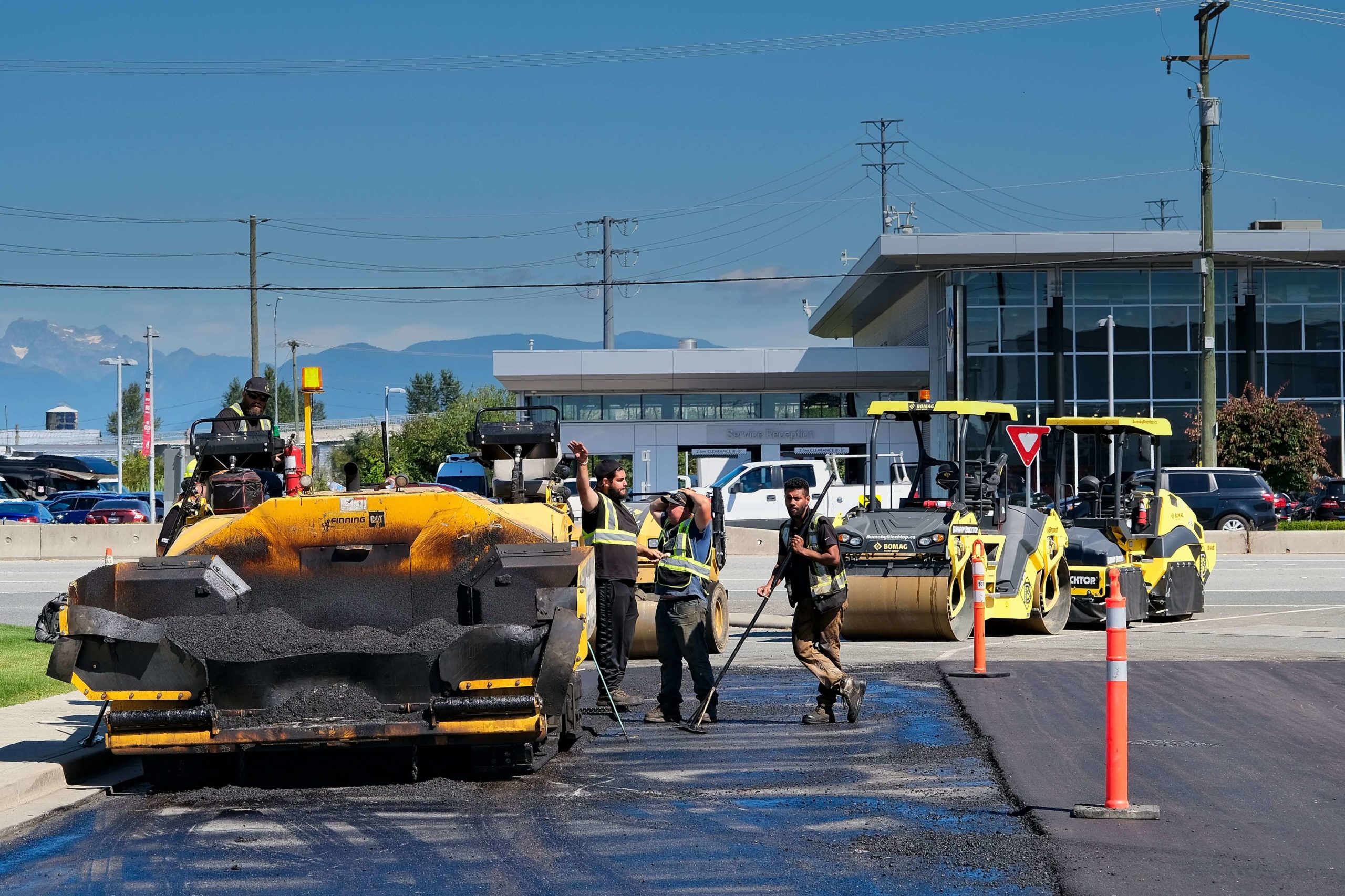Swift Solutions for Asphalt Spot Repair: Ideal Sealing Techniques
Swift Solutions for Asphalt Spot Repair: Ideal Sealing Techniques
Blog Article
Cold Mix Asphalt Vs. Hot Mix Asphalt: Which Is Right for You?

Composition Differences
Cold mix and warm mix asphalts vary substantially in their structure, with distinct attributes that influence their performance and applications. Cold mix asphalt is generated by emulsifying the asphalt binder with water and an emulsifying agent before blending it with aggregate. This technique permits the asphalt to be workable at lower temperature levels, making it suitable for temporary repair work and for usage in colder weather. Warm mix asphalt, on the other hand, is manufactured at heats, commonly between 300-350 ° F, which helps to accomplish far better compaction and a more long lasting last item. The warm mix asphalt production process includes heating the aggregate and asphalt binder independently before combining them at the asphalt plant.
Moreover, cold mix asphalt has a tendency to be less dense and a lot more flexible than hot mix asphalt. This flexibility makes it much better fit for areas with higher degrees of activity, such as driveways or roads with heavy web traffic. In comparison, hot mix asphalt is known for its high sturdiness and resistance to rutting and splitting, making it a preferred option for freeways and high-traffic roadways where longevity is vital.
Installment Refine Variations
The process of installing cool mix and hot mix asphalt shows significant variations in their requirements and treatments. Cold mix asphalt, being an extra flexible product, can be applied directly from the bag or container onto the split or damaged location. It requires marginal preparation work, such as cleansing the area and condensing the cool blend with hand tools. This makes it a convenient alternative for quick and temporary solutions. On the other hand, warm mix asphalt necessitates an extra fancy installment procedure. It includes warming the blend to heats prior to laying it down on an appropriately prepared base. The prep work includes condensing the base, applying a tack layer, and utilizing hefty machinery like pavers and compactors for a long lasting and smooth coating. As a result of the home heating requirements, hot mix asphalt setups are commonly accomplished by specialists with customized equipment, ensuring a much more structurally audio and long-term result.
Longevity and Longevity Factors
When taking into consideration asphalt alternatives, toughness and durability are important factors to evaluate for long-term pavement efficiency. Hot mix asphalt (HMA) is known for its phenomenal toughness and durability.
In regards to long life, HMA normally exceeds CMA due to its premium toughness and resistance residential or commercial properties. HMA sidewalks have a longer solution life, requiring much less frequent repairs and upkeep, which can translate to set you back savings over time. Furthermore, HMA sidewalks are much more conveniently adjustable to satisfy details job needs, even more improving their longevity.
Price Considerations
Taking into consideration the economic effects is an essential aspect when reviewing the choice between hot mix asphalt (HMA) and cool mix asphalt (CMA) for sidewalk jobs. While the first cost of hot mix asphalt is generally higher than that of chilly mix asphalt, HMA usually offers a much more cost-efficient service in the lengthy run due to its premium longevity and long life.
Along with material costs, it's important to consider the expenditures related to installment and maintenance when comparing HMA and CMA. HMA usually needs specialized equipment and skilled labor for correct setup, which can impact general job costs. Alternatively, CMA is much easier to deal with and can usually be used making use of find more information less complex methods, possibly reducing installation costs. Eventually, the choice in between HMA and CMA should think about not simply the first expense but likewise the long-term financial implications to figure out one of the most affordable alternative for the specific pavement task.
Environmental Effect Contrast
Comparison of the ecological impacts in between warm mix asphalt (HMA) and cold mix asphalt (CMA) exposes unique distinctions in sustainability techniques. HMA manufacturing requires high temperature levels, leading to enhanced power intake and greenhouse gas exhausts. The process likewise launches unpredictable natural compounds (VOCs) and hazardous air pollutants (HAPs) into the environment. In comparison, CMA is created and applied at lower temperatures, minimizing power usage and discharges substantially. The reduced manufacturing temperature levels of CMA result in reduced fuel usage and lower levels of CO2 emissions, making it a much more ecologically friendly alternative.
Moreover, the use of CMA commonly entails reusing existing asphalt pavement, advertising resource preservation and reducing the quantity of waste sent to garbage dumps. By opting for CMA over HMA, roadway building projects can add favorably to environmental preservation efforts.
Verdict
In final thought, the selection in between cold mix asphalt (CMA) and warm mix asphalt (HMA) relies on different aspects such as make-up, installment process, durability, durability, price, and environmental impact. cold mix asphalt. While CMA provides a affordable and fast service for small fixings, HMA guarantees premium sturdiness and long life for rush hour areas. Consider these variables carefully to identify which kind of asphalt is the right option for your paving requires

Thinking about the economic implications is a crucial element when evaluating the selection between hot mix asphalt (HMA) and cool mix asphalt (CMA) for sidewalk jobs. While the initial expense of warm mix asphalt is typically higher than that of chilly mix asphalt, HMA often gives an extra affordable option in the lengthy run due to its superior sturdiness and longevity. angle parking.Contrast of the ecological influences between hot mix asphalt (HMA) and cool mix asphalt (CMA) discloses distinctive differences in sustainability practices.In final try this web-site thought, the selection in between cold mix asphalt (CMA) and hot mix asphalt (HMA) depends on numerous aspects such as composition, setup procedure, longevity, long life, price, and ecological effect
Report this page